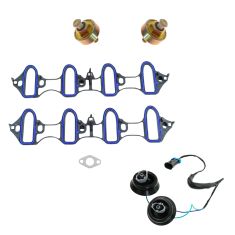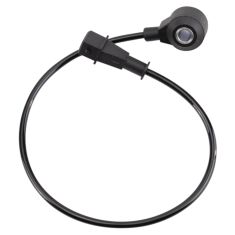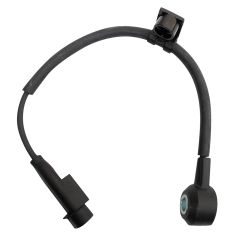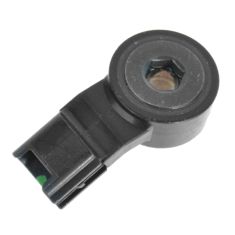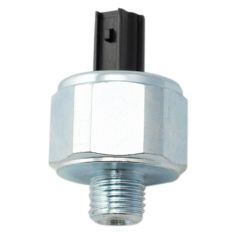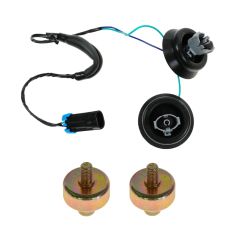Knock Sensor
-
-
- Air Deflectors & Valance Panels
- Battery Trays & Related
- Body Panels
- Bumpers & Related - Front & Rear
- Convertible Tops, Soft Tops, & Parts
- Decal & Stripe Kits
- Emblems & Nameplates
- Engine Compartment Trim
- Frame Parts & Bushings
- Fuel Door Parts
- Fuel Tank Filler Neck
- Grille
- Header Panel
- Hood & Hatch Lift Supports
- Hood Latch & Catch Brackets
- Hood Release Cable
- Jack Pads
- Radiator Supports
- Rust Repair Panels
- Splash Shields & Fender Liners
- Tailgate Cables
- Tailgate Hinges & Related
- Weatherstripping
-
- Car Covers
- Exterior Lighting
- Exterior Parts & Accessories
- Exterior Safety & Security
- Exterior Storage
- Fender Flares
- License Plate Brackets & Frames
- Mud Flaps & Splash Guards
- Nerf Bars, Side Steps, Running Boards
- Radio Antenna
- Rain Deflectors
- Roll Bars, Light Bars, & Related
- Roof Rack
- Skid Plates
- Spare Tire Carriers & Related
- Spare Tire Covers
- Tire Care
- Tonneau Covers
- Tow Hooks & D-Shackles
- Towing Accessories
- Trailer Hitch & Components
-
- Accelerator Pedal Pad
- Auto Carpet
- Brake Pedal Pad
- Clutch Pedal Pad
- Console Parts
- Dash Pad Cover
- Dash Vents
- Floor Mats & Liners
- Horns & Horn Parts
- Interior Parts & Accessories
- Mirror - Interior Rear View
- Seat Cover and Sets
- Seat Heater Kits
- Seat Parts and Accessories
- Sun Visors & Related
- Trunk & Cargo Parts
-
- Accelerator Pedals & Sensors
- Alarms, Control Modules, & Remote Start
- Cruise Control Switch & Lever
- Electrical Parts
- Hazard Switch
- Ignition Key Lock Cylinder
- Ignition Switch
- Keyless Entry Remote & Related
- Neutral Safety Switch
- Parking Assist Cameras & Monitors
- Power Mirror Switch
- Power Seat Switches
- Power Window Switch
- Radio, Navigation, Entertainment
- Reverse Light Switch
- Trunk Release & Lock Solenoids
- Turn Signal Switches and Levers
- Windshield Wiper Switch
-
- Idler Arm
- Pitman Arm
- Power Steering Hoses
- Power Steering Oil Cooler
- Power Steering Pressure Sensor
- Power Steering Pump
- Power Steering Pump Cooling Fan
- Power Steering Pump Pulley
- Power Steering Pump Reservoir
- Steering Dampers
- Steering Knuckles and Spindles
- Steering Rack and Gear Boxes
- Steering Shafts & Couplers
- Steering Wheels & Column Parts
- Tie Rods & Adjusting Sleeves
-
-
-
-
-
213
22
10
10
-
Notify When Available
Replaces Chevrolet GMC Cadillac Hummer Engine Knock Sensor & Harness Kit TRQ ESA12269
Brand: TRQ - ESA12269$102.95Save 13%List $118.95 Save $16.00Brand: TRQ - ESA12269$102.95Save 13%List $118.95 Save $16.00 -
Notify When Available
Replaces Chevrolet GMC Cadillac Engine Knock Sensor & Harness Kit TRQ ESA12270
Brand: TRQ - ESA12270$82.95Save 22%List $105.95 Save $23.00Brand: TRQ - ESA12270$82.95Save 22%List $105.95 Save $23.00 -
Notify When Available$24.95Save 22%List $31.95 Save $7.00Brand: TRQ - ESA90016$24.95Save 22%List $31.95 Save $7.00
-
Notify When Available$24.95Save 22%List $31.95 Save $7.00Brand: TRQ - ESA90042$24.95Save 22%List $31.95 Save $7.00
-
Notify When Available
-
Notify When Available$25.95Save 32%List $37.95 Save $12.00Brand: TRQ - ESA53625$25.95Save 32%List $37.95 Save $12.00
-
Notify When Available$29.95Save 25%List $39.95 Save $10.00Brand: TRQ - ESA53633$29.95Save 25%List $39.95 Save $10.00
-
Notify When Available$24.95Save 24%List $32.95 Save $8.00
Replaces Engine Knock Sensor TRQ ESA53621
Brand: TRQ - ESA53621$24.95Save 24%List $32.95 Save $8.00 -
Notify When Available$24.95Save 22%List $31.95 Save $7.00Brand: TRQ - ESA90098$24.95Save 22%List $31.95 Save $7.00
-
Notify When Available$51.95Save 19%List $63.95 Save $12.00Brand: TRQ - ESA12267$51.95Save 19%List $63.95 Save $12.00
loading...
Choose the Make of Your Vehicle

